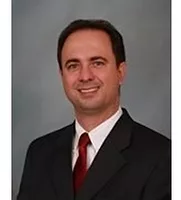On Sept. 17, John Galyen, president, Danfoss North America, addressed the importance of taking a holistic approach to improving the efficiency of the U.S. commercial building stock as part of a broad objective to double energy productivity.
Galyen was joined by representatives of New Buildings Institute, U.S. Department of Energy, National Grid, Johnson Controls, and other leading energy efficiency advocates for a Congressional briefing at the Hart Senate office building in Washington, D.C., entitled “Reinventing Existing Buildings: The Path to Increasing Energy Productivity.”
Sens. Rob Portman (R-OH) and Jeanne Shaheen (D-NH), who sponsored The Energy Efficiency Improvement Act of 2015, which was signed into law in April, and continue to work on a bipartisan comprehensive energy package, delivered the keynote remarks at the briefing.
In his remarks, Galyen advocated a holistic approach to improving energy efficiency in commercial buildings – including incentives to deploy proven technologies and transparency on energy use.
According to Galyen, existing buildings account for 99 percent of the total buildings market. These same buildings use 35.5 percent of U.S. electricity and 21 percent of primary energy and, therefore, should be the focus of efforts to increase energy productivity.
Galyen shared four key action items that will positively impact the goal of doubling U.S. energy productivity by 2030:
- Supportive regulations and standards
- Broader deployment of available, proven energy-efficient technologies
- The right package of inducements, including financing, building labelling and reporting, to deploy those technologies
- A level of transparency on energy use and commitments by both private and public building owners and operators to make economically justified investments in energy productivity.
“We need supportive regulations and standards,” he said, adding that although progress has been made through standards like ASHRAE 90.1, we are approaching technological limits using current component efficiency levels. “The next level will come from integrated systems, along with supportive, complementary standards and regulations, and organizations that are willing to engage, collaborate, and implement a whole building system approach.”
Galyen also pointed to available and proven, yet under-deployed technologies, including variable speed, energy recovery and renewables, that can help meet the energy productivity challenge.
According to Galyen, 70 percent of all HVAC systems shipped today are at minimum regulated efficiency levels, despite the fact that nearly all manufacturers offer systems that are 50 percent or more efficient. “Why? Because the focus is on first cost and not on the total life-cycle cost of the equipment, even though the design life is 15 years or more. The return on investment for premium equipment is more than justified.”
As an example, Galyen cited a Pacific Northwest National Laboratory case study in which a 150-ton chiller that uses Danfoss Turbocor variable speed compressor technology replaced one of two existing 150-ton chillers in a U.S. courthouse. The PNNL data validated an efficiency improvement of 42 percent, almost double the energy productivity, and a payback of five years, along with improved performance, reliability and comfort.
“Imagine applying this technology today to the vast commercial building stock with old, inefficient HVAC systems,” Galyen posited.




